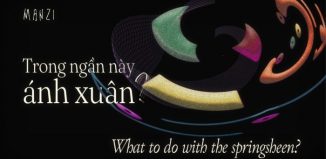KVT – The Revolution Lives again

KVT revels in musical revolutionary history
Recently I had the privilege to see the revolutionary opera, ‘Co Sao’ performed at the Opera House with principal singers and ballet troupe from the Vietnam National Opera and Ballet, a young and vital chorus from the Military University of Culture and Arts, and the Vietnam National Symphony orchestra in the pit conducted by the admirable Tetsuji Honna.
The opera, set in the 1940ies in Son La, was first performed in the Opera House in 1965 to celebrate the 20th anniversary of the Democratic Republic of Vietnam. A shortened version was mounted in 1976 to celebrate re-unification. This 2012 full version, with supplementary music composed by Do Hong Quan, was staged to celebrate the composer, Do Nhuan’s, 90th birthday(1922-1991).
Although the principal character, ethnic woman Co Sao, is fictional, I understand that the opera has autobiographical undertones as the composer was a political prisoner at the infamous Son La prison at the time the opera is set.
If you’ve ever been to visit the prison you can immediately conjure up the hideous brutality that was meted out to prisoners by their French captors. The one bit of beauty that relieves the horror of torture, privation and starvation amongst the ruins of the prison is the peach tree that is still flourishing amongst the rocky walls. This was grown from a peach stone by prisoner To Hieu and his story almost demands another opera. Its heroic and hard won growth was perfectly evoked by the painted set in the final, victorious act
As I understand the synopsis and plot: A Sao, sung (and acted) very emotively and powerfully by soprano Ha Pham Thang Long, was an ethnic woman accused by her people of being bewitched and was expelled from her community. She built a rough hut in the jungle in the vicinity of the prison (Son La was not even a small town at this stage in history). An escaped prisoner, Hong Ha (powerfully and expressively sung by baritone, Manh Dung) is helped by A Sao and she is converted to the revolutionary cause to rid the country of the French and gain independence, by Ha and a revolutionary cadre Chi Van (sung by my favorite local mezzo soprano, Ngo Huong Diep)
Things move on apace as the Japanese invaders usurp the French…just as brutally it appears.
A Sao is captured by the local big lady who has decided to divorce her French leaning husband and team up with the local dignatory who is in cahoots with the Japanese. A Sao is forced to become a member of the big lady’s dance troupe.
Meanwhile the local ethnic leader, cu Sinh, is fed up with the taxes and brutality being loaded onto his people and leads a delegation of protest to the big lady’s big house. The protest is severely put down and cu Sinh is taken away to the prison to be tortured.
At the same time a big shot Japanese officer wants A Sao’s body and cajoles and threatens her but she escapes with cu Sinh into the impenetrable mountains, to Phuong Huong which is a famous place in resistance lore.
Then comes the finale when Ha leads a revolutionary force into the hideout and he is reunited with A Sao amidst song and dance.
A Sao joins the revolutionary army and with the other escaped prisoners and the enlightened ethnic people, march off to join in the war of resistance, destroy the prison, and eventually be victorious in the war of liberation….you can imagine all them in Ba . Dinh Square in 1945 when Uncle Ho heroically read the Declaration of Independence. That would have been overwhelming for them!
The Opera was mostly staged in revolutionary style and the finale with two red flags being waved through and above the cast as they sung and danced to inspiring revolutionary music, was enough to make me stamp my feet and clap in emotive approval.
The music was really listenable and I’d like to hear a score played symphonically, or a symphonic suite transcribed from it. The opera was really lucky to have The VNSO in the pit and luckier still to have Honna at the helm as his expertise with opera is renowned in Japan.
Staging (costumes, sets and lighting) was as good as finances allowed and the effect was, overall, believable. Direction seemed to be kept nicely to a revolutionary ideal and the choreography, though predictable, was visually stirring
Singing had its ups and downs as to quality and volume but in a challenging opera such as this, it would be difficult to achieve a totally A class cast. Even so, it was a treat and the principals and ensembles ranged from outstanding to better than good enough. The chorus work was a feature.
As I said at the beginning to my opinion piece, it was a privilege, and an honor, to be part of this historical occasion…and I loved every single minute of it.
![]()
| Kiem Van Tim is a keen observer of life in general and the Hanoi cultural scene in particular and offers some of these observations to the Grapevine. KVT insists that these observations and opinion pieces are not critical reviews. Please see our Comment Guidelines / Moderation Policy and add your thoughts in the comment field below. |

















It was a great pleasure to attend the show. I and my friend was overwhelmed with the superb performance of Ha Pham Thang Long. Agree with you that it’s difficult to have a totally A class cast whilst Ms Thang Long outperformed the rest.